- Books Name
- English Language Book
- Publication
- PathSet Publications
- Course
- Class 5
- Subject
- English Language
Types of punctuations and their uses Period (.)
This one is probably the most straightforward. Also referred to as a full stop, the period denotes the end of a sentence. A full sentence is considered as one that is complete and declarative.
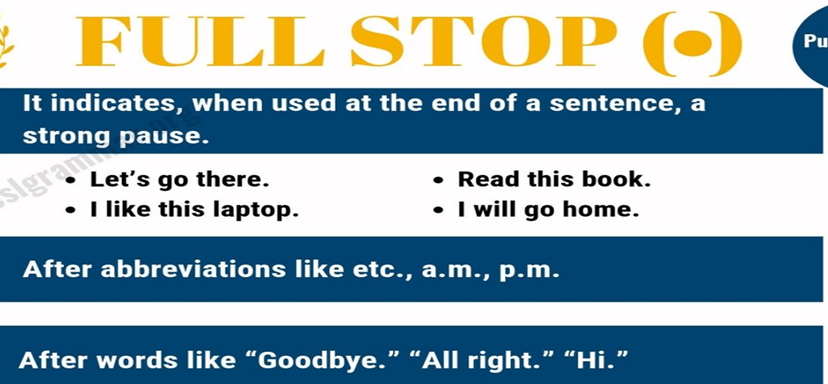
Here’s an example of a period at the end of a sentence -
The dog ran under the fence.
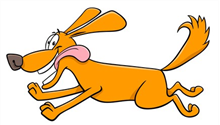
Periods are also used in abbreviations, such as in names or titles.
Here are examples of how to use a period in abbreviations:
• Dr. Smith read his patient’s chart.
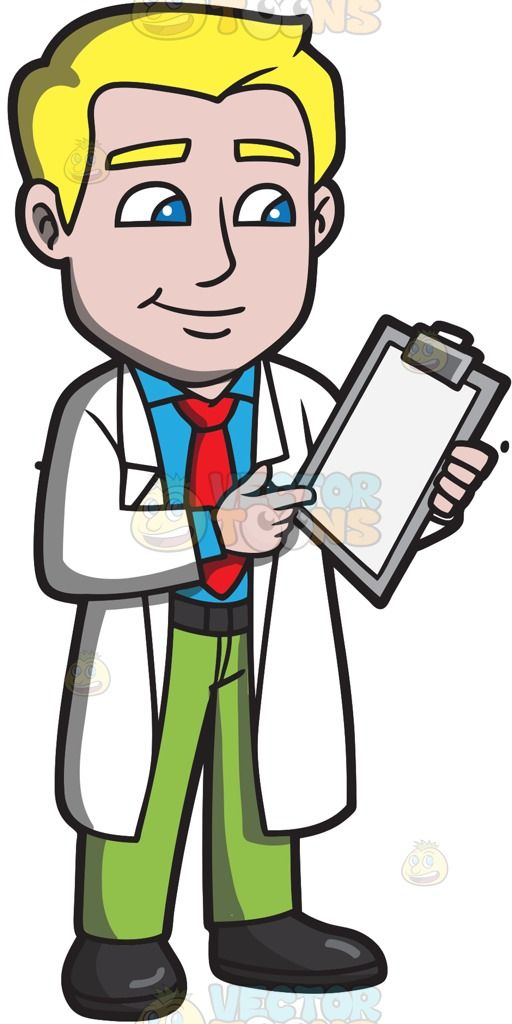
• Mr. H. Potter opened his front door.
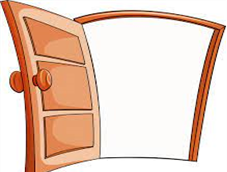
Question Mark (?)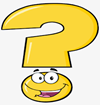
A question mark also ends a sentence, however it ends a sentence that is a direct question. Typically, sentences that are questions begin with what, how, when, where, why, or who.
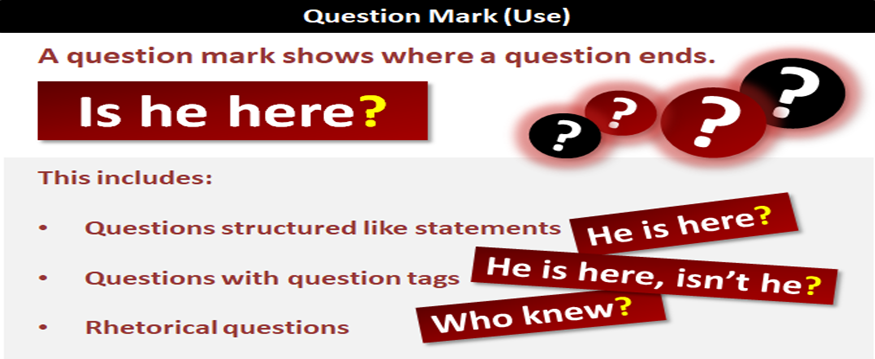
Here’s how to use a question mark in a sentence
How do you like your eggs?

• Why didn’t you like the movie last night?

Generally, a question mark also denotes a shift in tone in a sentence if it’s being read out loud, so this is something to take note of.
Exclamation Mark (!)
An exclamation point or exclamation mark is also used at the end of a sentence when that sentence expresses an intense emotion. The expression can be a variety of things, from excitement, disgust, anger, joy, or anything else. Exclamation points are meant to add emphasis to a sentence.
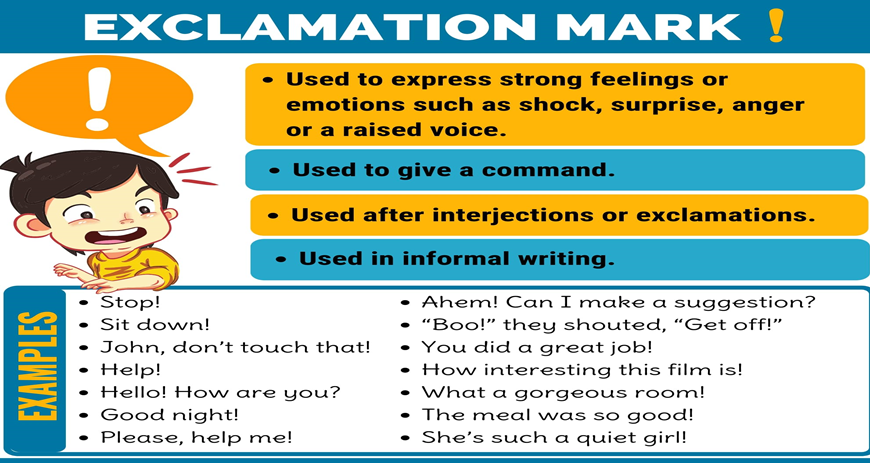
Here’s how to use one in a sentence:
• “Look out behind you!” she yelled.

I’m so excited to go to the park tomorrow!

Comma (,)

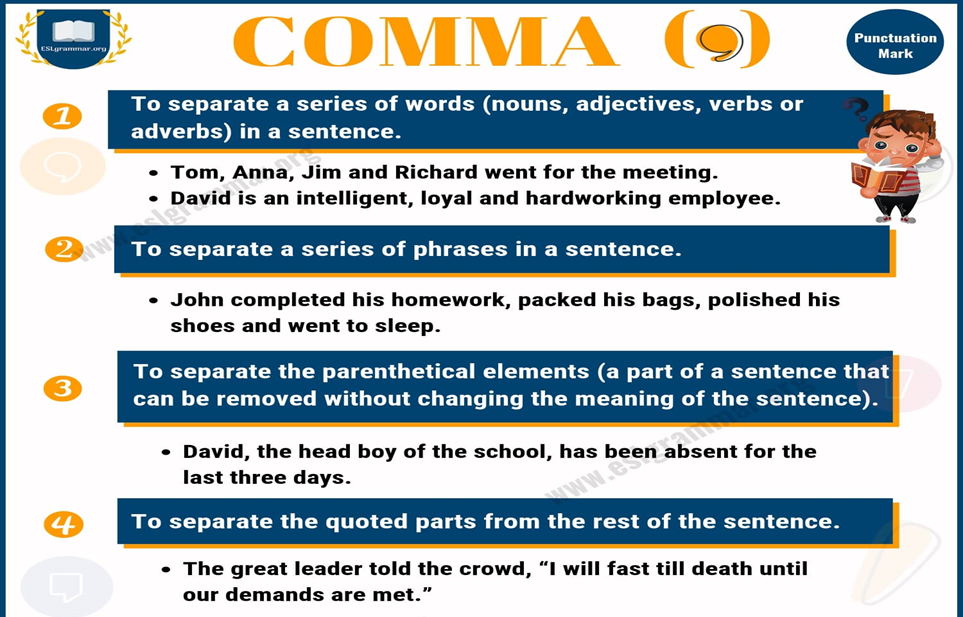
Colon (:)
A colon has three primary uses. One way to use it is when introducing something, such as a quote, an example, a series, or an explanation.
She took four classes last semester: history, biology, arts, and economics.
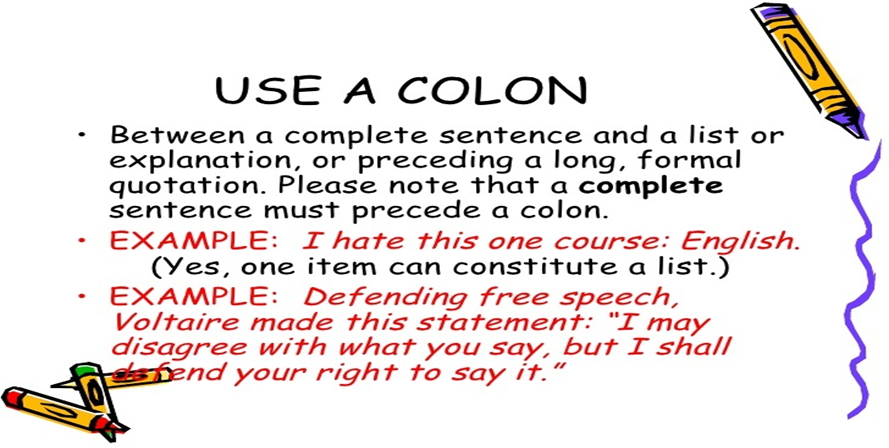
A colon can also be used to link two independent clauses if the second clause clarifies or completes the first one.
For example:
They didn’t have time to waste: it was already late.
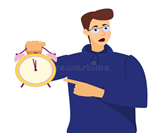
Finally, a colon can also emphasize a subject in a sentence:
I only hate one vegetable: brussel sprouts.

Dash (-)
There are two types of dashes that vary in size and use.
En dash: Typically shorter in length, the en dash is used to denote a range, such as between numbers or dates. For example:
• The company was operational from 1990-2000.

• He took the Chicago-New York train last night.


 PathSet Publications
PathSet Publications
